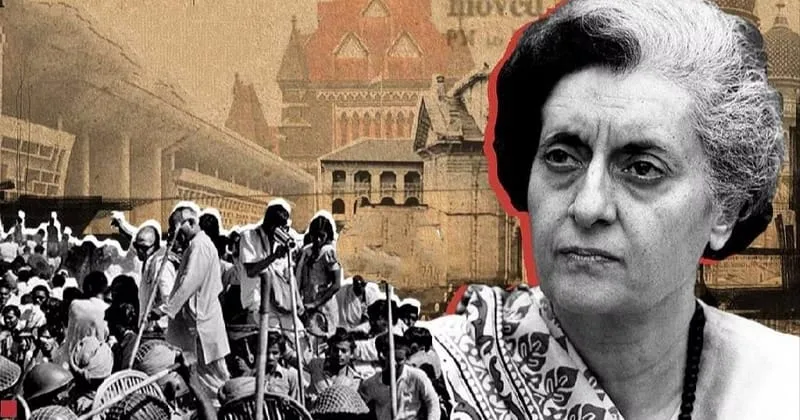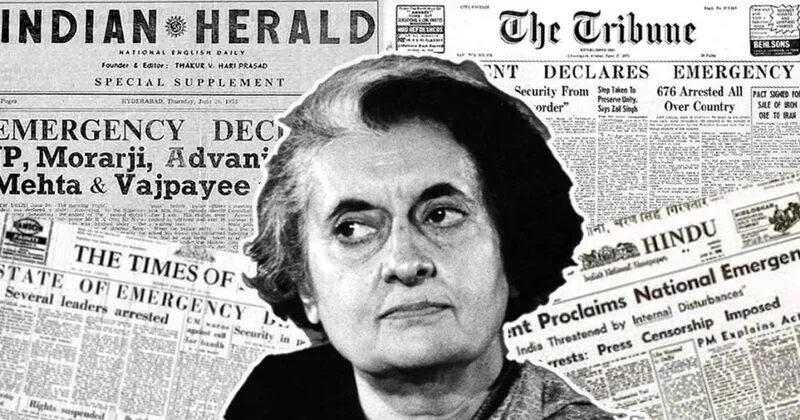Introduction
On the night of 25 June 1975, India’s democracy came to a standstill. Then Prime Minister indira gandhi emergency declared a nationwide Emergency under Article 352 of the Constitution, citing threats to national stability. Over the next 21 months, civil liberties were suspended, opposition leaders jailed, and the press heavily censored. Though India remained a democracy on paper, it functioned as an authoritarian state.

Why the Emergency Was Declared
The trigger was a landmark judgment by the Allahabad High Court finding Gandhi guilty of electoral malpractice, effectively invalidating her 1971 election victory. Facing disqualification, she invoked the Emergency clause to suppress mounting protests led by socialist leader Jayaprakash Narayan.
Civil Rights and Judicial Silence
During the Emergency, over 110,000 people were arrested—including prominent leaders like Morarji Desai and LK Advani. Judicial resistance was minimal. In states like Uttar Pradesh, not a single detention order was overturned. Fundamental rights were suspended, and courts were largely complicit or silenced.

Sterilisation Campaign and Social Cleansing
A controversial family planning drive led by Sanjay Gandhi, Indira’s unelected son, resulted in the forced sterilisation of an estimated 11 million Indians. Many were coerced with threats of job loss or police violence. Slum demolitions, particularly in Delhi’s Turkman Gate, displaced around 700,000 people, disproportionately affecting the urban poor and minorities.
Media Censorship and Intimidation
The Emergency muzzled India’s once-vibrant free press. Power to newspaper presses was cut, and strict censorship laws were imposed. Papers like The Indian Express and The Statesman ran blank editorials to protest the crackdown. Foreign journalists, including the BBC’s Mark Tully, were expelled for refusing to sign censorship agreements indira gandhi emergency.
The Five-Point and Twenty-Point Programmes
Alongside state policies, Sanjay Gandhi’s five-point programme (covering sterilisation, anti-dowry, adult literacy, and caste abolition) was enforced with zeal. Congress officials were ordered to implement both Sanjay’s plan and Indira’s 20-point programme, effectively merging personal and state agendas indira gandhi emergency.

Suppression of Labour and Economic Impacts
Over 2,000 trade unionists were jailed. Strikes were banned, and the last remnants of workers’ rights were erased. However, the Emergency saw a short-lived rise in industrial efficiency. Strikes dropped, and production rose. Industrialists like JRD Tata even praised the regime’s “pragmatic” economic approach.
Pressures in the South vs North
While the North bore the brunt of authoritarian policies, the South saw lesser impact due to stronger regional governments and civil societies. This disparity revealed the limits of central control in India’s federal structure.
End of Emergency and Democratic Reflection
The Emergency ended in March 1977 when Gandhi, confident of her popularity, called elections—and lost. The Janata Party came to power, rolling back many laws. But the psychological and institutional scars remained.
As historian Gyan Prakash notes in his book on the Emergency, the episode highlights how fragile democratic institutions can be when power remains unchecked. It was a chilling reminder of how quickly freedoms can vanish under the pretext of national interest.
Legacy and Lessons

Indians today remember the Emergency as both an aberration and a warning. BR Ambedkar, architect of the Constitution, had warned of hero worship in politics, calling it “a sure road to degradation and dictatorship.”
The Emergency remains one of the most controversial chapters in Indian political history—a moment when the world’s largest democracy briefly slipped into authoritarianism.
For more political context, read: Palestine Action Protest: Seven Charged Amid Terror Law Controversy.









